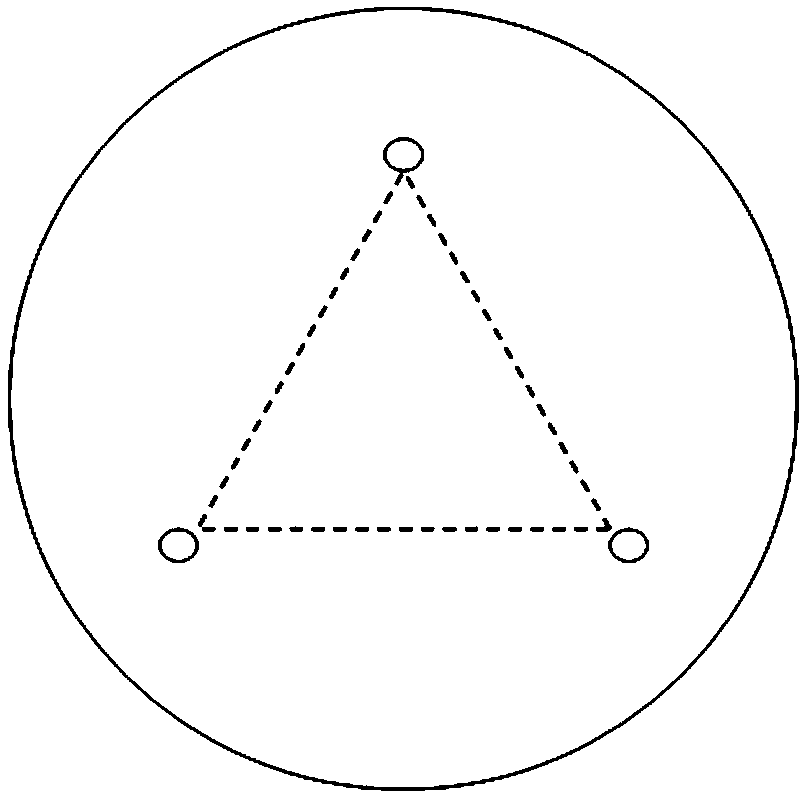Efficient domestication cultivation method for Phlebopus portentosus strain
A dark brown reticulum and cultivation method technology, applied in the field of microorganisms, can solve the problems of low unit yield, low occurrence efficiency, fixed genetic traits, etc., and achieve the effects of increased yield and stability, stable yield, and complete form
- Summary
- Abstract
- Description
- Claims
- Application Information
AI Technical Summary
Problems solved by technology
Method used
Image
Examples
Embodiment 1
[0042] A high-efficiency domestication and cultivation method for Dictyostelium boletus strains, the present embodiment is wild fruit body basidiospore protozoa mating, comprising the following steps:
[0043] (1) Gather wild Dictyostelium bursa boletus fruiting bodies:
[0044] The Phlebopus portentosus of the present embodiment is collected from the wild in Yunnan, Sichuan and other places;
[0045] (2) Collect basidiospores:
[0046] Under aseptic conditions, select part of the cap from the collected fruiting bodies of Dictyostelium phelicans, stick them to the mouth of a pre-sterilized test tube, and place them in a sterile environment for 16-48 hours to allow the basidiospores to eject naturally After reaching the bottom of the test tube, after about 24 hours, brown basidiospore prints can be seen on the wall and bottom of the test tube with the naked eye. Take out the fruit body block, sterilize the test tube mouth with the flame of an alcohol lamp, and insert the cotto...
Embodiment 2
[0062] A method for efficiently acclimating and cultivating Dictyostelium boletus strains, the present embodiment is non-wild fruit body basidiospore protozoa mating, comprising the following steps:
[0063] (1) Collecting the fruiting bodies of the dark brown reticulum boletus in the market:
[0064] The Phlebopus portentosus fruit body (Phlebopus portentosus) of the present embodiment is collected from fresh fruit body on the market;
[0065] (2) Collect basidiospores:
[0066] Under aseptic conditions, select part of the cap from the collected fruiting bodies of Dictyostelium phelicans, stick them to the mouth of a pre-sterilized test tube, and place them in a sterile environment for 16-48 hours to allow the basidiospores to eject naturally After reaching the bottom of the test tube, after about 24 hours, brown basidiospore prints can be seen on the wall and bottom of the test tube with the naked eye. Take out the fruit body block, sterilize the test tube mouth with the fl...
Embodiment 3
[0082] A method for efficiently domesticating and cultivating Dictyostelium boletus strains, the present embodiment is artificially cultivating fresh fruiting bodies and wild fruiting bodies, collecting wild and non-wild two types of fruiting body basidiospores; and then carrying out these two types of basidiospores Quality matching, including the following steps:
[0083] (1) Gather the fruiting body of Dictyostelium pallidum:
[0084] The Phlebopus portentosus of the present embodiment is collected from artificially cultivated fresh fruit bodies and wild fruit bodies, so as to collect wild and non-wild two types of fruit body basidiospores;
[0085] (2) Collect basidiospores:
[0086] Under aseptic conditions, select part of the cap from the collected fruiting bodies of Dictyostelium phelicans, stick them to the mouth of a pre-sterilized test tube, and place them in a sterile environment for 16-48 hours to allow the basidiospores to eject naturally After reaching the botto...
PUM
 Login to View More
Login to View More Abstract
Description
Claims
Application Information
 Login to View More
Login to View More - R&D
- Intellectual Property
- Life Sciences
- Materials
- Tech Scout
- Unparalleled Data Quality
- Higher Quality Content
- 60% Fewer Hallucinations
Browse by: Latest US Patents, China's latest patents, Technical Efficacy Thesaurus, Application Domain, Technology Topic, Popular Technical Reports.
© 2025 PatSnap. All rights reserved.Legal|Privacy policy|Modern Slavery Act Transparency Statement|Sitemap|About US| Contact US: help@patsnap.com



